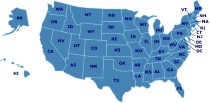How To Homeschool
What's Popular
Living Math
Cuisenaire Rods Multi-Pack
I Learn Better by Teaching Myself/Still Teaching Ourselves
Flip Over Math Manipulatives
West River Academy
Saint Thomas Aquinas Academy
Western Region Unschoolers
Unchores
CM4primaryyears
Children at Play : Using Waldorf Principles to Foster Childhood Development
Building a Montessori Homeschooling Co-op
Mother of Divine Grace Families
K12 Alaska
Hillside Education
Homeschool Ads
Resources
Beautiful Feet Books
Montessori: A Modern Approach
Paula Polk Lillard writes both as a trained educators and as a concerned parent -- she has many years as a public school teacher, but it was her enthusiasm for the education her own child experienced in a Montessori school that led her to become a leading voice in the Montessori movement in this country.
Her book offers the clearest and most concise statement of the Montessori method of child development and education available today.
Teach Your Own: The John Holt Book Of Homeschooling
Greenleaf Press
Real Lives: Eleven Teenagers Who Don't Go to School
Shurley English
Drawn Into the Heart of Reading
Waldorf Education: A Family Guide
What draws parents and educators toward Waldorf Education today? "Waldorf Education - A Family Guide" offers a "first look" for parents and educators into the history, philosophy, curriculum, and traditions of this unique education. This comprehensive book is a collection of articles describing the world of Waldorf Education - the fastest growing independent school movement in the world.
Teach Me to Do It Myself: Montessori Activities for You and Your Child
Montessori Life
Designed to provoke thought, professional growth and provide a forum for discussion of major issues & ideas in education.
A History of Science
Dr. Montessori's Own Handbook
Greenleaf Press
Montessori Play And Learn : A Parent's Guide to Purposeful Play from Two to Six
Now, Lesley Britton, the leading Montessori practitioner in England for more than twenty years, will show parents how to bring Montessori home. If you would like to facilitate the development of your child's unique personality, make it possible for him to develop to his full intellectual capacity, and help him become socially and emotionally well adjusted, then this is the book for you.
Montessori Play and Learn is packed with ideas, activities, and games that can fit into your normal routine and help supplement preschool learning for your child. For planning your home, introducing your child to the supermarket or the neighborhood, and helping him discover other people and cultures, this book provides valuable tips and insights that help parents and children grow and learn together.
-- Create hundreds of learning opportunities from everyday life
-- Learn dozens of games and activities to help prepare children for mathematics, reading, science, and writing
-- Make your home environment as stimulating for your child as the best Montessori preschool.
Pecci Reading Method: At Last! A Reading Method for Every Child
Cuisenaire Rods Multi-Pack
Free to Learn: Introducing Steiner Waldorf Earkt Childhood Education
Topics include:
· How kindergarten enables healthy child development
· What is movement based learning
· Why creative play is so crucial
· How children learn through imitation and rhythm
· When children are ready for school
· How to get support for parenting and daycare
Free to Learn is a unique guide to the principles and methods of Waldorf early education, drawing on kindergarten experience from around the world, with stories, helpful insights, lively observations, and pictures.
Veritas Press
Diana Waring--History Alive!
Easy Grammar Systems
Homeschooling: The Early Years: Your Complete Guide to Successfully Homeschooling the 3- to 8- Year-Old Child
Visual Brainstorms
A Reason For® Reading
A Reason For® Handwriting
Learn and Do Unit Studies
The Story of the World
- The Story of the World, Volume 1: Ancient Times
- Activity Book One: Ancient Times
- The Story of the World, Volume 1: Ancient Times Audiobook CD, read by Barbara Alan Johnson
- The Story of the World, Volume 2: The Middle Ages
- Activity Book Two: The Middle Ages
- The Story of the World, Volume 2: The Middle Ages Audiobook CD, read by Barbara Alan Johnson
- The Story of the World, Volume 3: Early Modern Times
- Activity Book Three: Early Modern Times
- Story of the World, Volume 3: Early Modern Times Audiobook CD, read by Jim Weiss
Sing, Spell, Read & Write
Bob Books
Life in America
MCP PLAID Phonics
Featured Resources
As an Amazon Associate, we earn from qualifying purchases. We get commissions for purchases made through links on this site.




















